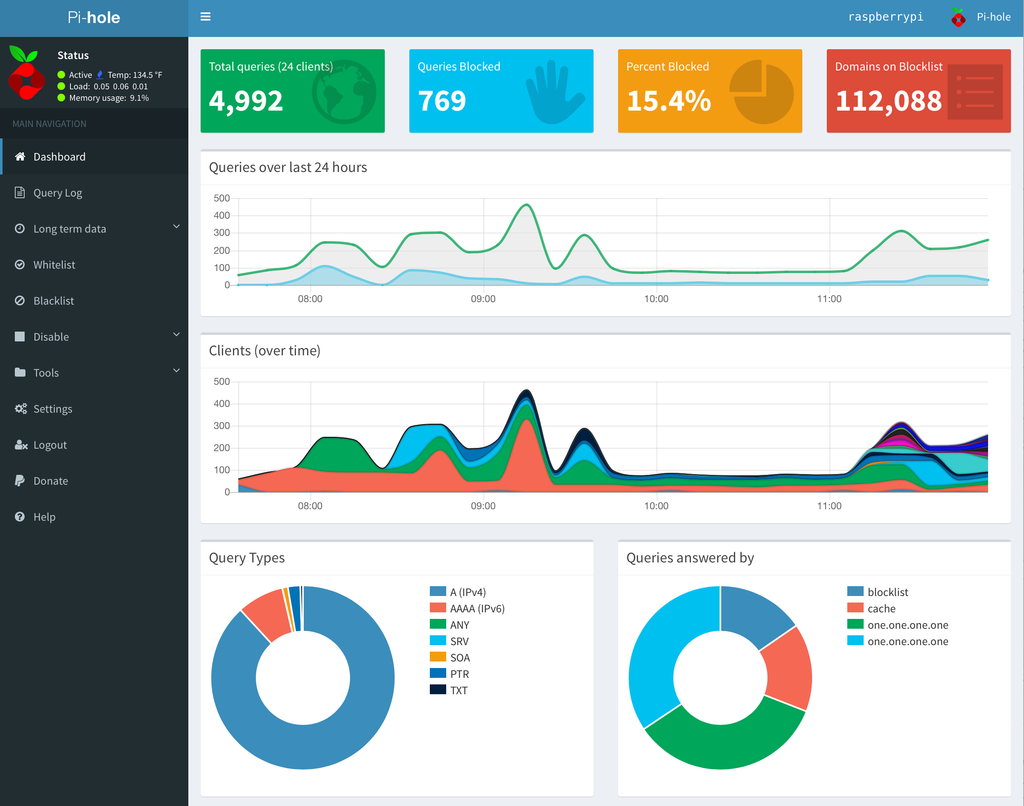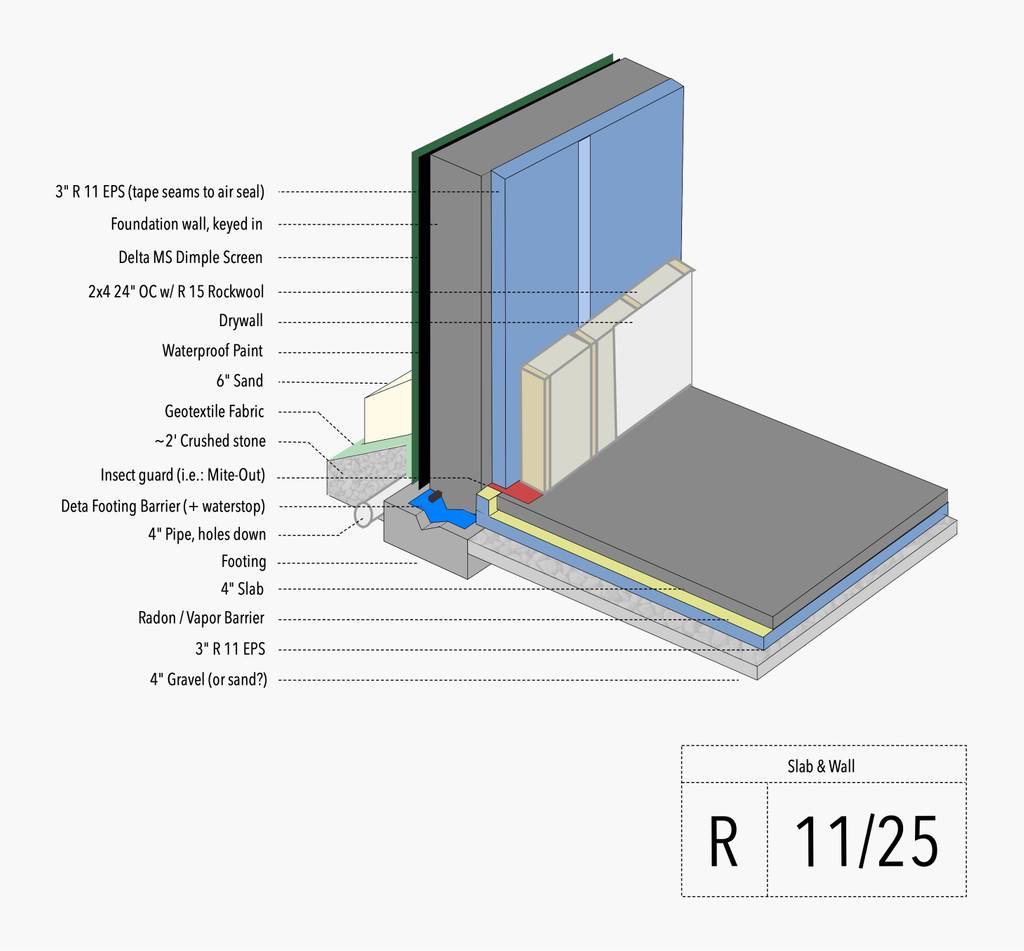
Whenever we discuss a well insulated house, we’re always met with push back on cost and overkill in general. In preparation, we wanted to see what a few different assemblies might cost. So, we met up with Ryan’s uncle who has been building homes for the past 20 years. He gave us a breakdown on man hours for various applications like house wrap, siding, framing and so on. With that information, we could take material costs and get a rough price.
Our budget has also been updated to reflect this.
BREAKDOWN OF COSTS
We’ll get to the results first, and then you can go on to see the specifics below.
In short, our exterior walls using standard construction techniques would cost around $25,000. To make those walls passive, the cost moves up to roughly $32,500. To make the walls green, durable and passive, the price approaches $40,000. So, we’re looking at a 30% to 60% increase. On a $650,000 house, that makes the total increase 1-3%.
Once you factor in the basement, roof and windows, it is easy to see how the total cost increase of going passive is 7-15%. Don’t let that scare you though – most, if not all, is recouped.
HOW WE CALCULATED COST
| Component | Quantity |
|---|---|
| Sqft | 3,350 |
| Lineal Ft | 2,345 |
| 4x8 Sheets | 107 |
| 2x4 Sheets | 419 |
| Vertical Strapping Lineal | 1,675 |
| Horizontal Strapping Lineal | 3,350 |
| Linear ft of tape | 1500 |
For cost, we first figured out all of the areas and lengths needed (see the table). With that in hand, we could take quantity, tax and a 20% overage to calculate material cost. Then, for labor costs, we took the framer average in our area and added 20% for profit margin.
To figure out man hours, we sat down and talked with a builder. Then, we padded everything to make sure time was sufficient. Finally, we took the estimates and cross referenced them to a local build that provided us with their cost breakdowns.
Important These are just approximations that allow us to glance at material and component costs. Real bids are still needed, and we will revisit this with actual costs.
STANDARD ASSEMBLIES
First, let’s take a look at two standard walls: Plywood with a water barrier and Zip Sheathing. For Tyvek, we just used a Homewyse estimate, so that could be a tad off. Also, take note that the plywood estimate uses 1/2" while the zip is 7/16". There are a ton of variations not covered in this post, but the rough figures are still applicable.
2x6 Plywood Wall
| Component | Material Cost | Labor Cost | SubTotal |
|---|---|---|---|
| 2x6, 24” OC LSL Framed Wall | $5,244.59 | $4,080 | $9,324.59 |
| Framed Cavity Rockwool | $5,595.78 | $1,224 | $6,819.78 |
| 1/2 Plywood Sheathing | $2,386.21 | $3,672 | $6,058.21 |
| Tyvek House Wrap | $1,000 | $2,000 | $3,000 |
| $25,202.59 |
2x6 Zip Wall
| Component | Material Cost | Labor Cost | SubTotal |
|---|---|---|---|
| 2x6, 24” OC LSL Framed Wall | $5,244.59 | $4,080 | $9,324.59 |
| Framed Cavity Rockwool | $5,595.78 | $1,224 | $6,819.78 |
| 7/16 Zip Sheathing | $2,481.93 | $3,672 | $6,153.93 |
| Zip Tape | $632.61 | $816 | $1,448.61 |
| $23,746.92 |
INSULATED ASSEMBLIES
Next we’ll look at assemblies that have continuous insulation. This basic level of exterior insulation is actually enough to certify as a Passive House in the warmer climate zones. Below you’ll see two common walls with exterior insulation. This is also where we’ve added improved durability into the mix with a rainscreen. All said, it’s about $7,500 more.
Zip R Wall
| Component | Material Cost | Labor Cost | SubTotal |
|---|---|---|---|
| 2x6, 24” OC LSL Framed Wall | $5,244.59 | $4,080 | $9,324.59 |
| Framed Cavity Rockwool | $5,595.78 | $1,224 | $6,819.78 |
| 7/16 Zip R6 | $7,384.28 | $3,672 | $11,056.28 |
| Zip Tape | $632.61 | $816 | $1,448.61 |
| 1x3 Rainscreen Vertical + Horizontal | $1,188.06 | $2,448 | $3,636.06 |
| $32,285.33 |
Rockwool Comfortboard Wall
| Component | Material Cost | Labor Cost | SubTotal |
|---|---|---|---|
| 2x6, 24” OC LSL Framed Wall | $5,244.59 | $4,080 | $9,324.59 |
| Framed Cavity Rockwool | $5,595.78 | $1,224 | $6,819.78 |
| 7/16 Zip Sheathing | $2,481.93 | $3,672 | $6,153.93 |
| Zip Tape | $632.61 | $816 | $1,448.61 |
| R6 Rockwool Continuous Insulation | $5,194.17 | $1,224 | $6,418.17 |
| 1x3 Rainscreen Vertical + Horizontal | $1,188.06 | $2,448 | $3,636.06 |
| $33,801.16 |
GREEN ASSEMBLIES
In addition to going Passive, conscious builders also tend to look at green options. Defining the “greenest” choices is a science in its own right. For example, a 100% recycled, local product will beat most options. Ruling that out, we frequently come across Havelock Wool and Gutex. So, we took a look at a standard assembly with these products, and then we also looked at an assembly inspired by the 475 Smart Enclosure : Tier 3. These products are quite pricey, so it’s worthwhile to look for local alternatives.
Green Wall
| Component | Material Cost | Labor Cost | SubTotal |
|---|---|---|---|
| 2x6, 24” OC LSL Framed Wall | $5,244.59 | $4,080 | $9,324.59 |
| Framed Cavity Havelock Wool | $10,255.95 | $1,224 | $11,479.95 |
| 7/16 Zip Sheathing | $2,481.93 | $3,672 | $6,153.93 |
| Zip Tape | $632.61 | $816 | $1,448.61 |
| Gutex Multitherm 40 Continuous Insulation | $7,753.77 | $1,224 | $8,977.77 |
| 1x3 Rainscreen Vertical + Horizontal | $1,188.06 | $2,448 | $3,636.06 |
| $41,020.93 |
475 Inspired Wall
| Component | Material Cost | Labor Cost | SubTotal |
|---|---|---|---|
| 2x6, 24” OC LSL Framed Wall | $5,244.59 | $4,080 | $9,324.59 |
| Framed Cavity Havelock Wool | $10,255.95 | $1,224 | $11,479.95 |
| Metal Shear Strapping | 1,000 | $1,000 | $2,000 |
| Solitex Mento Plus WRB | $1,412.82 | $1,224 | $2,636.82 |
| Tescon Vana Tape | $728.46 | $816 | $2,636.829 |
| Gutex Multitherm 40 Continuous Insulation | $7,753.77 | $1,224 | $8,977.77 |
| 1x3 Rainscreen Vertical + Horizontal | $1,188.06 | $2,448 | $3,636.06 |
| $39,599.67 |
PREFAB ASSEMBLIES
Lastly, in a search for different types of assemblies, we took a look at what prefab companies are doing. Bensonwood is one of the only companies we’ve seen that takes a service cavity approach with optional exterior insulation in their Flexible Passive House Wall. For a different offering, the BuildSmartNA X Wall is essentially a SIP.
The prices below are estimates if we built the wall ourselves – they are not quotes from the companies.
Service Cavity Wall
| Component | Material Cost | Labor Cost | SubTotal |
|---|---|---|---|
| 2x3 Service Cavity | $535.16 | $2,448 | $2,983.16 |
| Service Cavity Rockwool | $2,797.89 | $1,224 | $4,021.89 |
| Intello Air Barrier | $1,930.66 | $1,224 | $2,832 |
| Tescon Vana Tape | $728.46 | $816 | $1,544.46 |
| 2x6, 24” OC LSL Framed Wall | $5,244.59 | $4,080 | $9,324.59 |
| Dense Pack Cellulose | $1,926.58 | $4,355 | $6,281.58 |
| 7/16 Zip Sheathing | $2,481.93 | $3,672 | $6,153.93 |
| Zip Tape | $632.61 | $816 | $1,448.61 |
| 1x3 Rainscreen Vertical + Horizontal | $1,188.06 | $2,448 | $3,636.06 |
| $38,226.30 |
SIP Wall
| Component | Material Cost | Labor Cost | SubTotal |
|---|---|---|---|
| 2x6, 24” OC LSL Framed Wall | $5,244.59 | $4,080 | $9,324.59 |
| Framed Cavity Rockwool | $5,595.78 | $1,224 | $6,819.78 |
| 1/2 OSB Sheathing | $3,411.81 | $3,672 | $7,083.81 |
| R6 Rockwool Continuous Insulation | $5,194.17 | $1,224 | $6,418.17 |
| 7/16 Zip Sheathing | $2,481.93 | $3,672 | $6,153.93 |
| Zip Tape | $632.61 | $816 | $1,448.61 |
| 1x3 Rainscreen Vertical + Horizontal | $1,188.06 | $2,448 | $3,636.06 |
| $40,884.97 |







